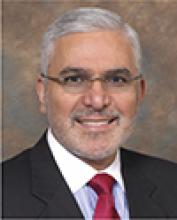Depression treatment seems to be in a “funk” these days. Armchair critics, some of whom have never treated a depressed patient, are flooding the media and Internet with allegations that antidepressants—which have helped patients for decades—are no better than placebo.
Several major pharmaceutical companies have pared down or shut down their CNS discovery, research, and development operations. There is a lack of new antidepressants with novel mechanisms of action, and the proportion of refractory or treatment-resistant depression (TRD) seems to be growing. In short, the status of clinical depression seems rather depressing.
Yet nothing can be further from the truth! A vibrant set of innovative, even radical, solutions for TRD are on the horizon. Here are some of the paradigm shifts in the neurobiology and therapeutics of major depression that gradually are toppling decades-old tenets and creeds related to this serious psychiatric disorder:
From genes vs environment to gene × environment interaction. For decades, it was assumed that some people have “endogenous” depression due to genetic determinants, while others are afflicted with “exogenous” depression caused by stressful life events. The new model shows that the environment interacts with genes to produce depression, and that having only risk genes or only environmental stress does not necessarily lead to depression.1
From ‘chemical imbalance’ to ‘inflammatory process.’ Evidence is accumulating that inflammation may be underpinning depression,2 and studies show levels of inflammatory cytokines and interleukins rise during a depressive episode and decline when the depression remits.
From ‘neurotransmitters’ to ‘neuroplasticity and neurotropic factors.’ Current treatments were developed to increase neurotransmitter activity in the brain, but new research reveals that depression is associated with a significant drop in neurotropic factors such as brain derived neurotropic factor (BDNF) or fibroblast growth factor with a concomitant decline in hippocampal neurogenesis.3
From serotonin, norepinephrine, and dopamine to glutamate. Over the past few years, glutamate pathways and the glutamate N-methyl-D-aspartate (NMDA) receptor have emerged as possibly of central importance to the neurobiology of depression.4 The link between the strong therapeutic effects of antagonizing the NMDA receptor in depression and the increase in BDNF and neuroplasticity has emerged as a fresh model of depression.
From pills to intravenous infusions. Studies have shown that a single infusion of the NMDA receptor antagonist ketamine produces a very robust response, including full remission, in treatment–resistant unipolar or bipolar depression within 1 to 2 hours!5 The mechanism of action has been attributed to a surge of BDNF and immediate neuroplastic changes4 following NMDA receptor blockade. This abrupt reversal of severe depression, like turning on a switch, is a total and pleasant surprise.
From monotherapy to augmentation strategies. The rather imprudent notion that a single medication can be effective in a heterogeneous spectrum of disorders such as depression gradually is yielding to intelligent polypharmacy, using evidence-based augmentation strategies that might include lithium, thyroid hormone, another antidepressant (particularly mirtazapine), atypical antipsychotics, anti-inflammatory agents (including omega-3 fatty acids), antioxidants (especially N-acetylcysteine), L-methylfolate, and exercise.
From pharmacotherapy to neuromodulation. Because they disseminate to all organs and not just the brain, medications can cause undesirable side effects. Neuromodulation is used to treat depression by stimulating specific brain regions. Electroconvulsive therapy has a tarnished image but well established efficacy in severe depression. Repetitive transcranial magnetic stimulation and vagus nerve stimulation are FDA-approved for treating depression, while other forms of neuromodulation, such as cranial electrical stimulation, epidural cortical stimulation, focused ultrasound, low field magnetic stimulation, magnetic seizure therapy, near infrared light therapy, and transcranial direct current stimulation, still are in development.6 Deep brain stimulation (DBS) has been shown in several recent studies to reverse TRD,7,8 especially when stimulating the subgenual anterior cingulated region. In the future, DBS may become as commonly used in depression as it currently is in Parkinson’s disease.
A remarkable transformation is underway to reinvent the causes and treatments of depression that will reignite optimism about what psychiatry can do and eliminate the disability associated with major depression. Our patients can hardly wait.


